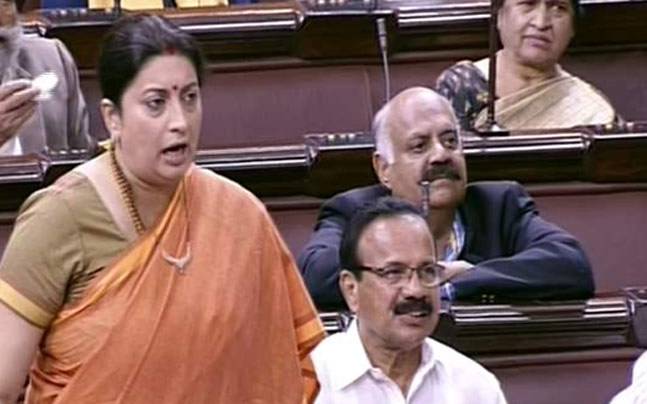
During the Lok Sabha session on November 22, 2019, four Members of Parliament – Manne Srinivas Reddy, Nusrat Jahan Ruhi, Dean Kuriakose, Gurjeet Singh Aujla – asked the Ministry of Women, Child and Development questions on three issues. Here is a breakdown of their queries and the Ministry’s response.
Has crime committed against women and juvenile/children increased within the last ten years in Delhi and Mumbai?
As to this first query, Irani quotes National Crime Records Bureau data to state that the crime committed against women and children are on decrease, but the crime rate has increased in Mumbai “within the last two years.” This NCRB data, however, is based on information from two years ago as the latest data available is from 2017.
What number of victims received legal help and protection through the Ministry of Women and Child Development during the trial?
With respect to the second query, Irani provides information on the Sakhi programme formulated under the Umbrella of National Mission for Empowerment of Women. 2.27 lakh women have benefitted from One Stop Centre Scheme and 38.62 lakh women have benefited from its Universalisation of Women Helpline Scheme, Irani states.
While this is the only information in the answer that was previously unpublished, it glazes over important details of how the scheme has actually been faring.
Only a total of 377 alleged domestic violence cases have been registered since December, 2017 till now at the OSC. Out of these, 107 cases are still pending. Multiple personal accounts of women in Haryana speak about the lack of funds, amenities and services to alleged police interference in OSCs.
Additionally, Irani provides details on Child Care Institutions (CCIs) made for “Children in need of care and protection” (CNCP) of the country, along with number of Children residing in them in an attached Annexure. While the institution of state homes for children is a step in the right direction, this glosses over cases of child rights violations witnessed in such childcare homes.
A research study titled, “Beyond 18: Leaving Child Care Institutions – A Study of Aftercare Practices in Five States of India,” released in August 2019, reported that 44% childcare leavers or CLs were never consulted in their care and rehabilitation planning, nearly 21% of all CLs across states had not received the education they had wanted to in their childcare institutes, while 35% had faced difficulty in continuing their education when they had transitioned out of childcare institutes. An overwhelming 52% of children said they lead unsatisfactory lives in CCIs.
Dissatisfaction in life is the often the lesser evil for these children. According to the Jena Committee Report of September 2018 (published by the Ministry of Women and Child Development itself) 1575 children had fallen victim to cases of sexual abuse while staying in CCIs. 189 children were also reported to be victims of child pornography in the Report. A case of alleged molestation by an employee of a girls’ home was reported on the day of this publication itself.
Keeping the increased sense of their responsibility in mind, Punjab now requires children NGOs to register themselves under the JJA so as to continue functioning (91% of CCIs are run by non-governmental organisations).
Does the Government have any plans for protection of women and juvenile criminals and provision of financial assistance that can enable their engagement in gainful employment?
For the third question, Irani makes a reference to CCIs again. With respect to Children in Conflict with Law Children housed in CCIs are supposed to be provided various rehabilitation and reintegration services (including skill development, vocational training, recreational facilities, mental health interventions) under the JJA.
However, as Udayan Care research study noted, the Child Protection System constructed under the JJA is not prepared to assist children that depend on it in reintegrating back into society, and the poor state of ICPs as well as rehabilitation planning emerges as a common deficit across states.
The Minister has not responded to query regarding protection of women criminals or the provision of financial support to woman and child prisoners. The lack of answers in the latter issue is particularly disheartening since most undertrial prisoners in India are so poor that they can’t even afford to pay the money required to secure bail.
The Ministry’s response can be read here: INSERT RESPONSE![]()
Related: